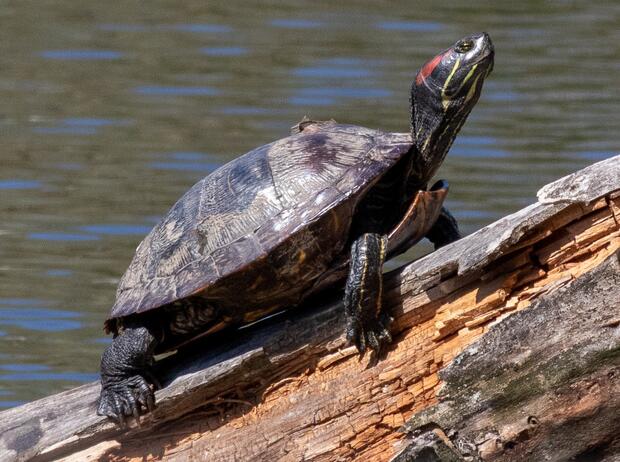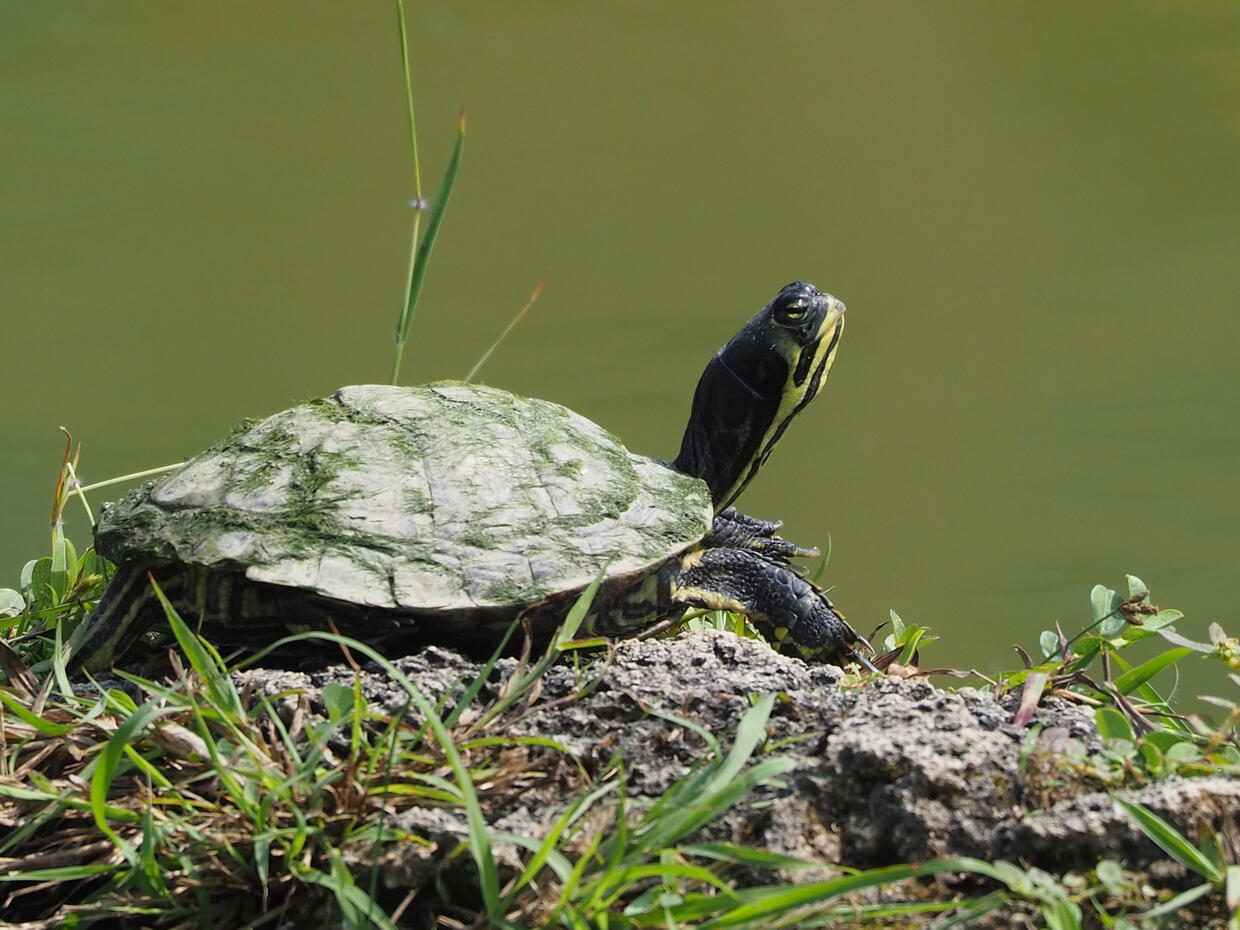Fast facts
Common name: Red-eared slider and yellow-bellied slider
Scientific name: Trachemys scripta elegans and Trachemys scripta scripta
Range in MA: Everywhere except Western, MA
Conservation Status: invasive
Similar looking species: each other
Identification tip: Red-eared sliders have a bold reddish stripe on each side of the head, yellow-bellied sliders have yellow stripes on their face and a yellow plastron.
Red-eared slider
Yellow-bellied slider
Description
Red-eared and yellow-bellied sliders are a big, usually well-marked subspecies of the southern Pond Slider, Trachemys scripta, with yellow and green striped patterning on carapace and body. Their plastron is yellow with dark smudges or eye-like spots on each scute. Older specimens sometimes become quite dark, making them difficult to identify. The tip of their upper beak is notched.
Why are they in MA?
This turtle is native to the Mississippi River basin and points west to New Mexico, but specimens can turn up almost anywhere, viable young have hatched from local nests, and it appears that populations are established in some urban watersheds. The red-eared and yellow-bellied slider is the classic “pet shop” turtle. Millions of babies were once shipped to five & dime stores all over the continent until the number of cases of salmonella they apparently initiated caused the federal government to ban the sale of specimens under 4 inches long. Today this species is still the most commonly encountered turtle in the pet trade. Illegal releases of these animals have established what appear to be viable populations in the greater Boston and Springfield areas, and individuals have been found in many of the larger bodies of water in the state.
Why are they a problem?
This is an aquatic species that likes to bask and prefers calm waters with muddy bottoms and lots of vegetation. Carnivorous in its feeding habits when young, it switches to a largely vegetarian diet as an adult. It may lay more than one clutch of 10-14 eggs per season and has the potential to compete with native turtle species. Animals released into the wild also have the potential to transmit exotic diseases to native species. If specimens of this (or any other non-native turtle) are encountered, please capture and turn them over to personnel at the Division of Fisheries & Wildlife’s Field Headquarters or any District office of the agency. Never release any non-native species into the wild.

